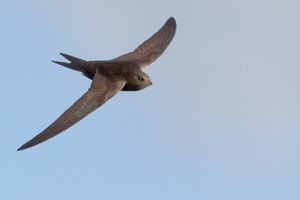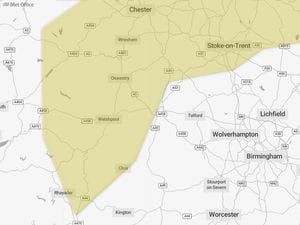Advice to help look after at-risk swifts
The Shropshire Wildlife Trust has offered advice on looking after swifts as they return to the UK for summer.

The trust said that the migratory birds' population has suffered a decline of half over the last 20 years thanks to loss of places to nest.
A statement from the trust said: "Our summer skies are ringing with the calls of swifts. Numbers build up from the time they first arrive, usually in early May, with waves of younger adult birds arriving later.
"These non-breeding birds are looking for a nesting hole. This is the most crucial thing a swift has to do in its whole life. Most common swifts do not breed until their fourth year but the young birds make the migration journey and start looking for a safe, dark hole where they will be able to raise a brood when fully mature. They are often heard screeching over the rooftops on still, warm evenings, establishing their territory in the sky. The apparent joie de vivre of these birds is breath-taking.
"Swifts are the most aerial of birds, living on the wing for years at a time, rarely touching ground for a single moment. They catch all their food in the air: aphids, flies, spiders, beetles, mayflies; even small moths and dragonflies, whirled into the sky, carried on the wind. They drink and bathe on the wing, sleep and even mate in the air.
'Catastrophic loss of nesting cavities'
"Nests are made in crevices in walls, under roof eaves or inside pantiles. Gathering materials takes time – all the feathers, wisps of grass, tree seeds and flower sepals must be found on the wing, blowing about in the air. Inevitably, these days, scraps of plastic are often found woven into the nest, a shallow dish glued together with the birds’ saliva.
"Most of their life is spent in Africa but they fly thousands of miles to breed here each summer. Our northern summers have a great advantage for swifts and many other kinds of insectivorous birds: long daylight hours, enabling them to forage for sixteen hours a day during midsummer.
"For thousands of years swifts lived alongside us, because the homes and other buildings we constructed for ourselves have also suited them.
"Today though, we are making it much harder for these birds to survive. Reduced abundance of insects and a catastrophic loss of nesting cavities have led to a 50 per cent decline over the last 20 years."
The advice to help includes: ensure nesting holes are kept open when carrying out roof renovations or insulation; put up a swift box on your house, at least five metres high; stop using garden chemicals to support a healthy insect population; keep records of swifts entering holes in buildings and tell your local record centre.
Find out more about swifts and how you can help protect them at wildlifetrusts.org/swifts.





